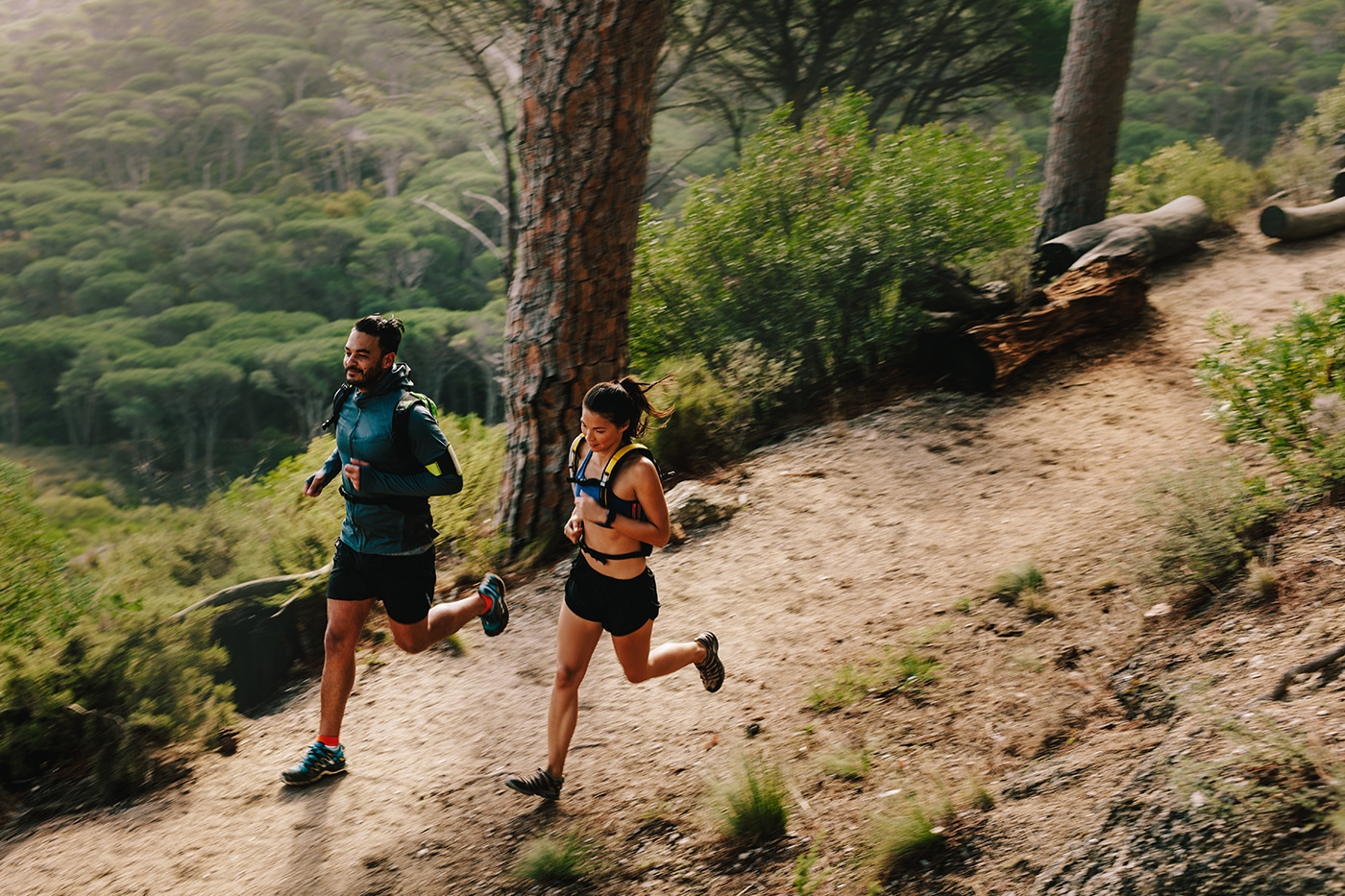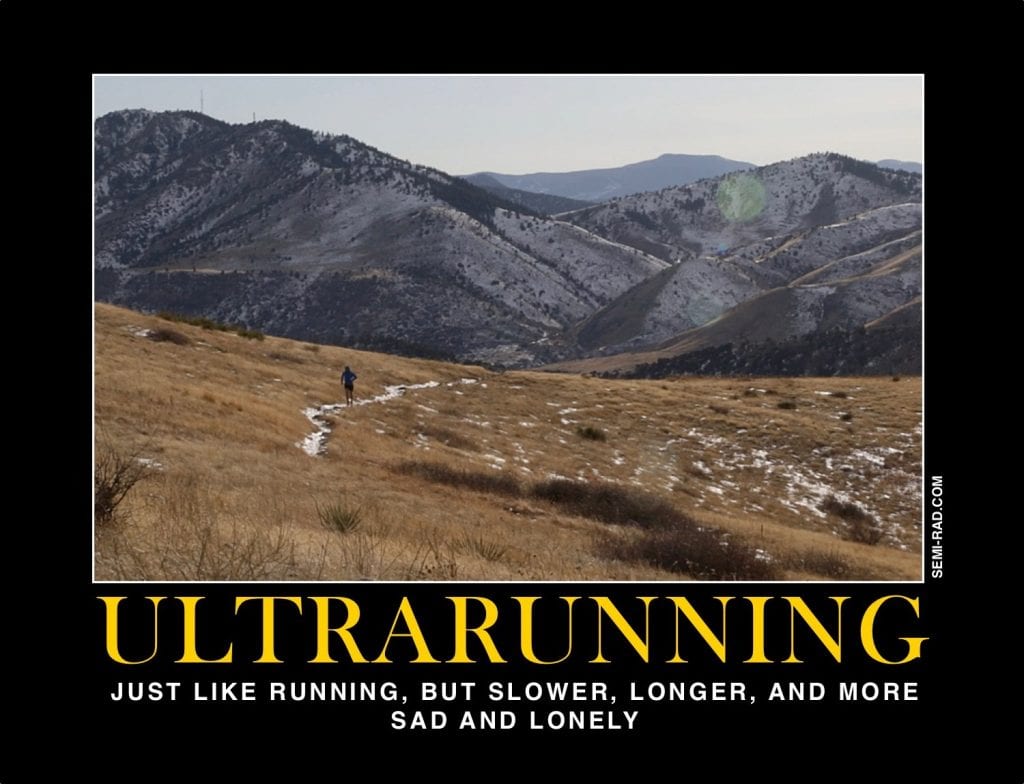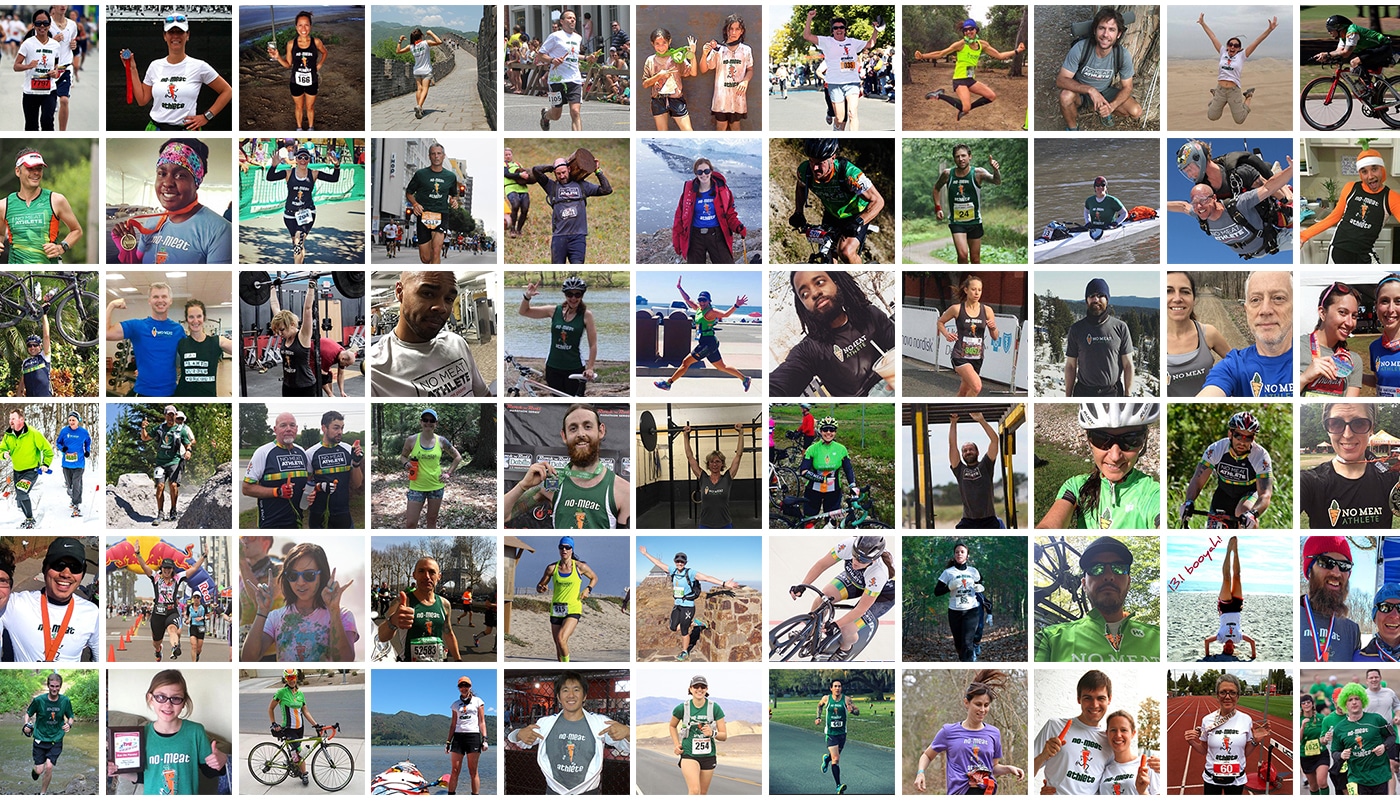
5 Essential Strategies to Help You Survive Your First 100-Mile Ultramarathon
So you want to run a 100-mile ultramarathon?
It sounds crazy (100 miles??), but you’re not alone. For the first time years, marathon finishes are down, yet ultramarathons continue to grow in popularity and reach.
Whether it’s the lure of the challenge, the trails, or the unknown, the prestige of the 100-mile distance still reigns supreme.
For some of us, it was the 100-mile distance that got us excited about the sport to begin with. We watched a movie, read a book, or heard about the elites and thought, “Could I do that?”
Yes. Yes you can.
Well, probably. Maybe. It’s not for me to say — only you can decide.
But I can help you get started with just a few key strategies.
Because as casual and approachable as I like to make ultrarunning feel for all runners, before tackling the triple-digit distance, there are a few things you should know. Strategies I’ve learned from successfully training for and completing five 100-mile races myself.

First, Master the Basics
Before we get too far along, I want to make sure you’re in the right place.
See, a few years ago I wrote the simplest ever guide for running your first 50K. I tried to keep things as basic as possible while still hitting all the important stuff.
My four big takeaways were that in order to succeed in transitioning from road races to a trail ultramarathon, you need to:
- Learn to run trails.
- Slow down.
- Go longer.
- Perfect your nutrition.
If you’re new to ultrarunning, bookmark this post for (much) later and start with those four tips. It was two years, six ultramarathons, and countless ultra-distance long runs before I ran my first 100 miler. And looking back on it now, I wish I had even more experience before taking the plunge.
No matter how driven you are to run a hundo, if you’re new to the sport, take your time. The lessons you’ll learn through miles and races will make a huge difference when it’s 3:00am and you’re ready to curl up next to a bush and cry.
Understood? Great.
Now that we’ve gotten that out of the way, let’s get into the five key strategies that will shape everything you do during 100-mile training.
1. Increase Your Weekly Mileage
When going from a marathon to a 50K, the mileage jump comes mostly from a longer runs or even multiple long runs on the weekend. In 100-mile training, however, most people will need to increase their weekday mileage as well.
I’m not talking about anything crazy, but for the first-time runners, things will look different.
What you need to know:
After an initial ramp-up, you can look forward to mostly 40-50 miles per week , with the exception being a few lighter weeks and those weeks when you have a Key Long Run scheduled (more on that below).
Expect your average weekday run to be 6-8 miles or 60-90 minutes in length. For many runners, this will be an increase from the 4-6 mile runs you might be more accustomed to.
When training for my first hundred, seven- and eight-mile weekday runs felt like a pretty big jump, but before long, it just became the standard, and anything shorter than that began to feel like a warm-up.
That’s the beauty of ultrarunning in general — perspectives change quickly. You may be surprised at how readily your body adapts to the increase, if you have the right fuel to support it. Speaking of which…
2. Get Ready for the Ultra Buffet
Let’s say your first 100 miler takes you 28 hours. If it starts at 5:00am, that means you’ll miss breakfast, lunch, dinner, and a second breakfast while out on the trail. That’s four meals!
No surprise, running gels alone aren’t going to cut it for most of us. Thankfully, you won’t have to resort to bits of flora from the forest floor. Enter the ultra buffet…
With sandwiches, fruit, wraps, soups, and sometimes even veggie bacon.
I’m going to share a bit about nutrition on race day, but the key thing to know while training is to test.
Test, test, and test again.
Use your long runs, tough workouts, and even rest days to think through nutrition strategies and see how foods sit in your belly.
What you need to know about real food:
These days it’s safe to assume that aid stations will have a variety of foods for plant-based athletes (even if it wasn’t intentional). Some staples include PB&J, fruit, chips, pretzels, and potatoes. And throughout a lot of hundred mile races, there’s often someone cooking up hot food like veggie broth, veggie burgers, or soup (plus a variety of non-vegan options like pancakes, bacon, etc.).
If you’re lucky enough to have a crew, however, having them prepare food ahead of your arrival can be a huge benefit. Some of my go-tos are:
- Oatmeal
- Hummus wraps
- Instant noodle bowls (like vegan pad thai)
- Refried beans in a tortilla
- Coffee (at night, if they don’t have that at the aid stations)
At lot of this food sounds like the last thing you’d want to eat mid run, but for some reason, that doesn’t matter. You’re calorie deficient enough, moving slow enough, and ravenous enough that it just works.
And the more you can practice eating these foods before, during, or right after a long run, the more likely you are to know what’s going to work (and what isn’t) come race day.
What you need to know about gels, gummies, and sports drinks:
Like I said, the sports nutrition products alone won’t typically cut it on race day, but for me and most people, they still play a wildly important role. I may consume real foods at the aid stations, but it could be hours between each crew checkpoint, so I rely on gels, gummies, and sports drink to provide a consistent stream of calories throughout the entire run.
By the end of a hundred-mile race, in addition to all the real food, I may have gone through a 15-20 gels or gummies. In the second half of the race, it’s just a matter of closing my eyes and getting them in however I can. If you’re curious, my go-tos right now are:
- Muir Energy Gels
- HUMA Gels
- CLIF Bloks
- Tailwind sports drink (in small amounts for me)
Throughout training, find the products that work best for you and let your body get to know them well.
What you need to know about nausea:
By sticking with foods you’ve trained with, you’ll significantly reduce the risk of stomach issues. But even so, during a race as long as 100 miles, nausea at some point is almost a given.
Enter the boot and rally…
Just kidding. (Although sometimes puking — or pooping — is the best way to hit the reset button.)
There are a million reasons why you might feel nauseous, and ultrarunners have a variety of tricks (like ginger crews or ginger beer) for reducing it, but oftentimes the best way to get through it is to simply slow down, force yourself to eat and drink, and walk it out. Chances are you’ll rebound before you know it.
To prepare for something like this, embrace the nausea in training. If you’re out for a long run and your stomach flips, don’t stop. Take the steps to work through it, both mentally and physically.
Since we’re here anyway, let’s talk about those long runs.
3. Embrace a Few Key Long Runs
Surprise! Long runs are part of running an ultramarathon!
OK, it’s no secret that long runs are a key part of training. The weekly (sometimes twice weekly) long runs not only build strength, but teach you important lessons about nutrition, mindset, and how to handle the time on your feet.
When training for a hundred, you’ll continue to focus on your weekly long runs, but also add in a few (I typically plan for three) of what I call Key Long Runs (KLR) that the rest of your training is centered around.
What you need to know:
These Key Long Runs build, just like the rest of your training, and the last should be 3-4 weeks out from race day. All the training around each KLR is focused on getting you to the next one, and it may even include a short taper or recovery period.
So what can a Key Long Run look like?
- Back-to-backs, where you’re running two significant long runs on consecutive days (or back to back to each other).
- Training races, anywhere from 50K to 100K. Training races give you a chance to get into the racing mindset, test out your gear and strategies, and offer a really easy way to log some serious miles. Ahead of each of my hundred milers, I’ve run at least a 40-mile tune-up trail race.
- Training runs on the course. If you can access the course ahead of time, I highly recommend getting in a KLR on the course. Some of my best pre-hundo long runs have been 10+ hour days out on the course, getting to know sections of trail, climbs, and terrain.
- The self-supported ultra. There’s absolutely no shame in pulling out a map, plotting a random route, and getting in an ultra distance long run by yourself. (In fact, I think that’s pretty badass.)
While you’re planning out your long runs, be sure you take it to account the conditions you’ll meet on race day. In other words…
4. Train for the Terrain
For any race, regardless of distance, taking terrain and conditions into consideration when training will help.
For a 100 miler, it can be the difference of finishing in glory or collapsing in an aid station chair halfway through and never getting back up again. I will die here before leaving this chair.
And of course, no two courses are the same.
Here’s what you need to know:
At the very early stages of your training, take the time to get to know the course, even if it’s just through race reports or maps:
- What does the elevation profile look like?
- How much vertical gain and descent?
- Does the course consist of mostly smooth paths or rugged mountain terrain?
- Is altitude a factor?
From there, plan your KLRs and other training runs to reflect that type of terrain. If it’s flat and fast, train flat and fast.
If it’s big mountains and rocky terrain, you better hit the hills and prepare your quads for a beating on the descents.
For example, ahead of the Hellbender 100 with over 25,000 feet of elevation gain/loss, I spent a lot of time hiking up the steepest trail I could easily access. I’d do laps, sometimes spending hours only to log a handful of miles. One week I ran that same loop, featuring a 1,500ft climb, eight times.
The race specific work you put in throughout training will pay dividends ten fold come mile 80.
While terrain is kind of a no-brainer, something you might not think about is the time of day that you’ll be running (like after sun set).
5. Prepare for the Night
One of the unique features of a 100-mile race is the fact that you’ll almost certainly be running through the night (maybe even two!).
Other than a few wish-I-could-forget-them nights when my daughter was an infant, hundred milers are the only reason I’ve pulled an all nighter since college. Not to mention the fact that you have to run the entire time too.
What you need to know:
1. Trail running: Trail running is trail running, but the experience of running at night is a little different. Even with a headlamp, it’s harder to see rocks and roots, and it’s easier to disconnect from your surroundings. Plus, it can get a little spooky when you’re by yourself.
The best thing you can do is practice. Grab a headlamp, an extra pair of batteries, let someone know where you’re going, and then hit the trail for night runs in the dark. You may actually find that it’s exhilarating and kind of addicting.
Here’s a guide I wrote that explores everything you should know about night running and safety.
2. Dealing with Exhaustion: Generally speaking, if you’re running through the night, you’ve already run through the day. That means you’re coming into a sleepless night already physically exhausted.
Without fail, some of my darkest moments in every hundred miler have been the span of time between 3:00am and sunrise. I drop into a place where sleep consumes every inch of my being.
Unfortunately, there’s not a ton you can do about this in training, but I do have a few strategies for fighting it on race day:
- Just keep moving. The longer you sit in a chair by the fire at an aid station, the harder it will be to get back up.
- Have a pacer when possible. If they know to keep you moving no matter what, they’ll do it.
- Eat. Food always helps.
- Don’t be afraid of caffeine, whether that’s from coffee, soda, or gels.
The sun always rises. The night always passes. And if you can keep your spirits up and keep moving, the finish line is that much closer.
Really, It Boils Down to Your Ability to Adapt
There’s just no way to sugarcoat it, running a 100-mile ultramarathon is going to hurt. There will be times that you want to drop out. Or punch your pacer. Or swear off running for the rest of your life.
Being a successful hundred-mile runner boils down to your ability to adapt to the tough conditions of the day, the stomach that flips out of nowhere, or the blister on your left foot.
Breathe. Assess the situation. And do whatever you have to do.
That’s where your hours and hours of training come in. They teach you how to handle the tough moments — and hopefully how to stay positive through them.
Because you know what? 100-mile ultramarathons are all about the mental game. And you control your mind.
So how bad do you really want it?












